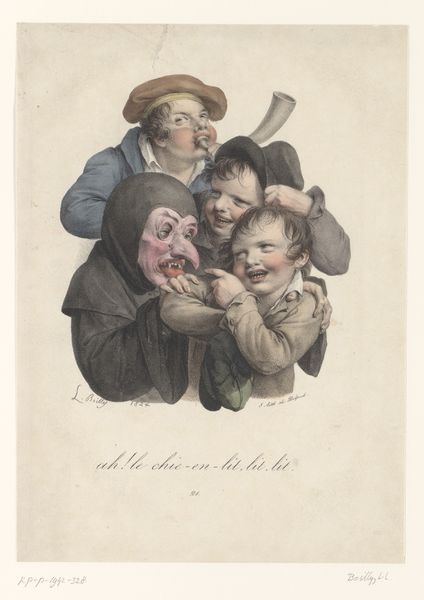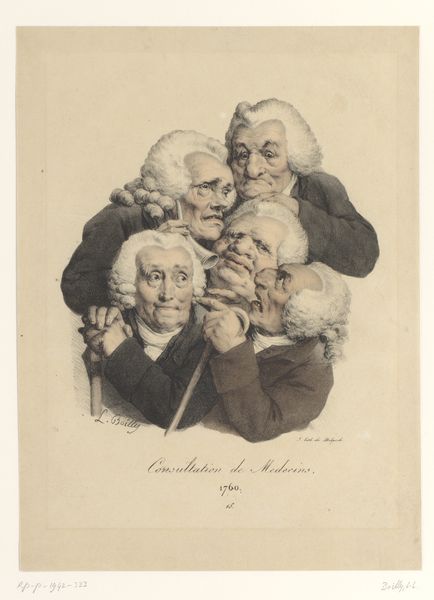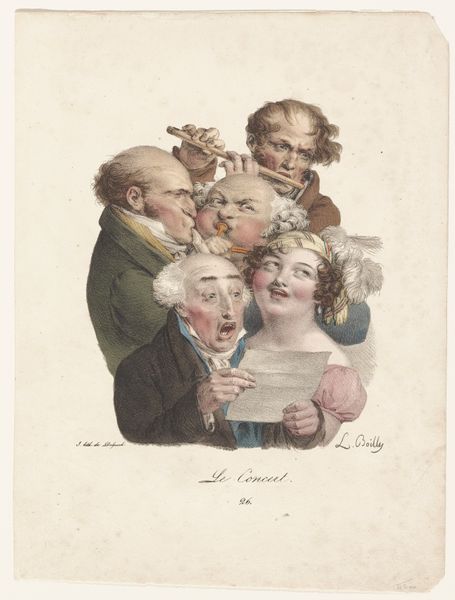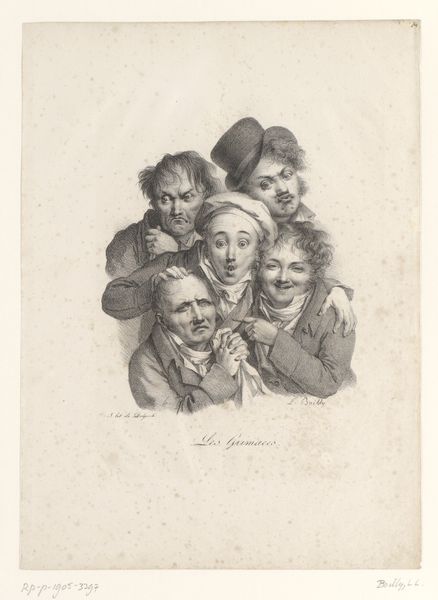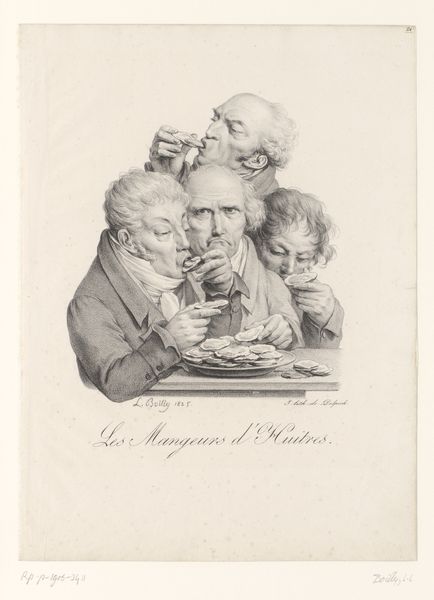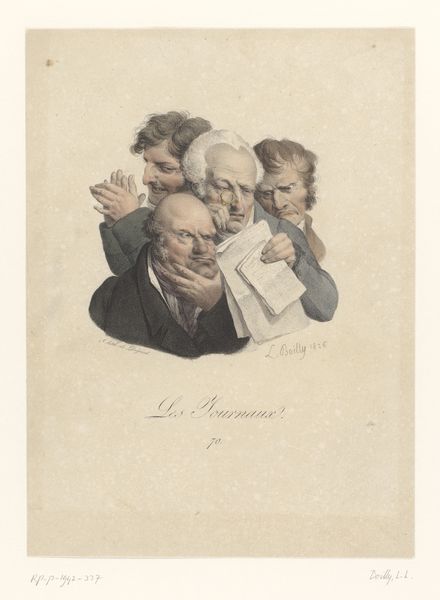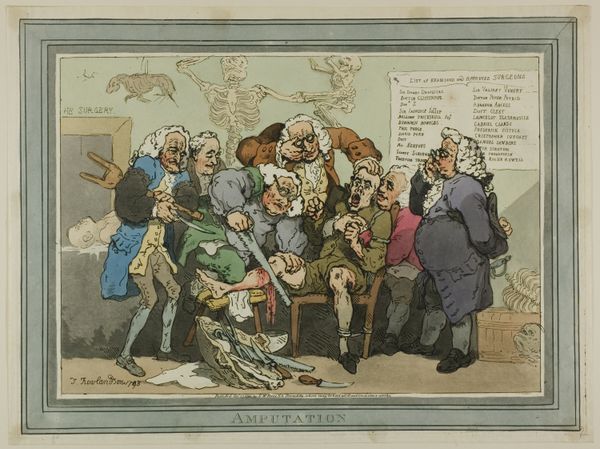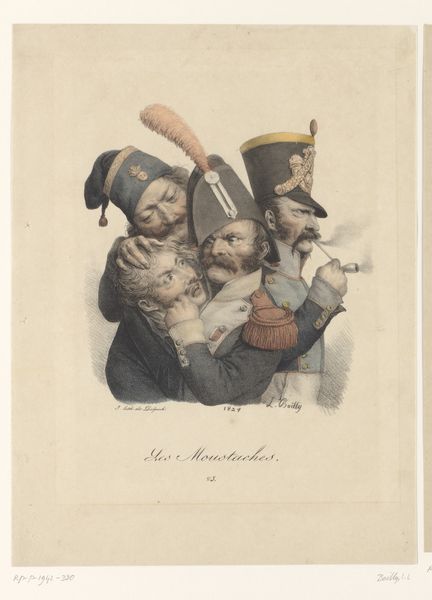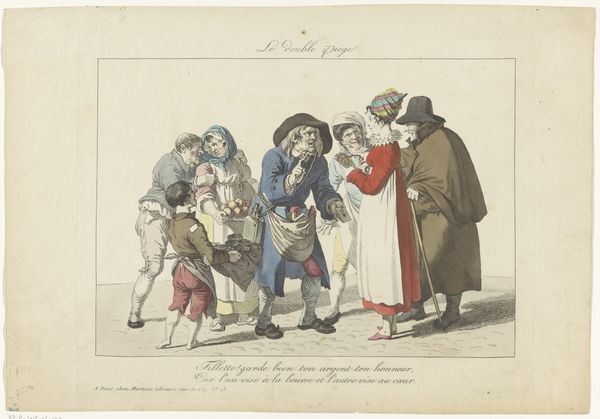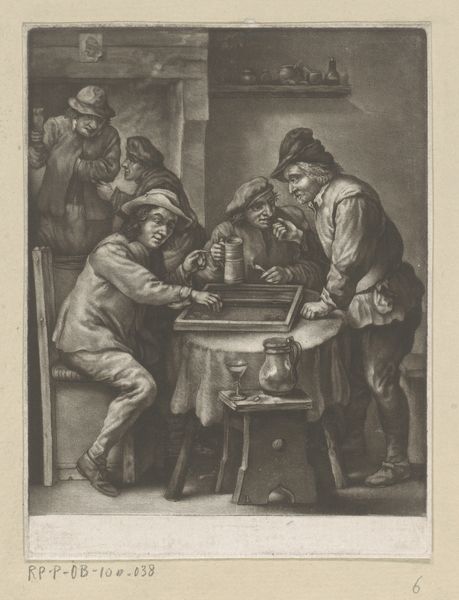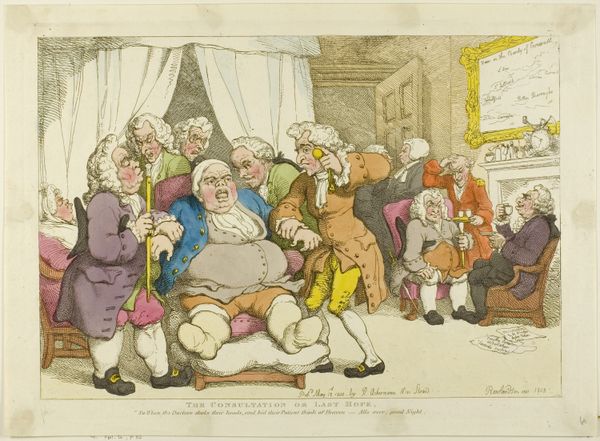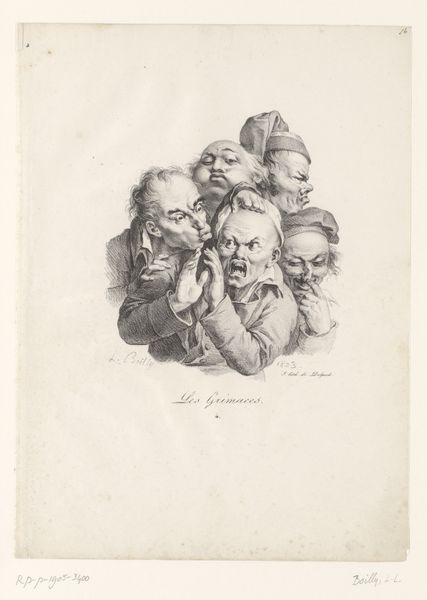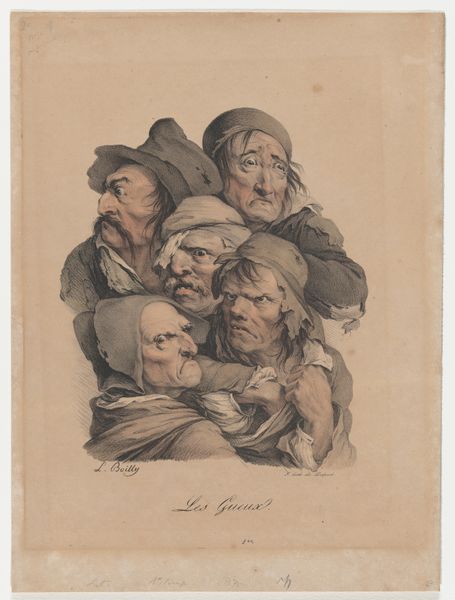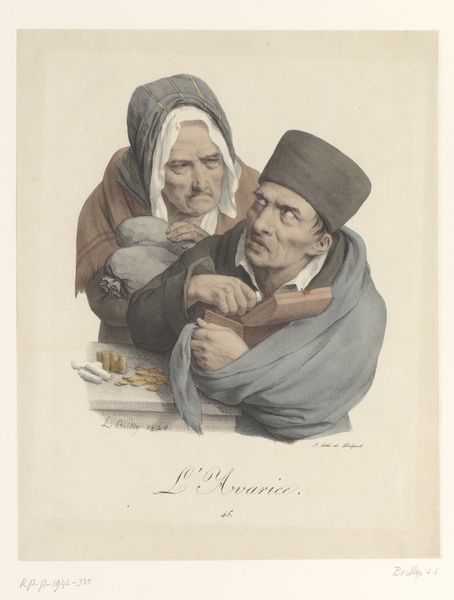
print, etching
#
portrait
#
neoclacissism
# print
#
etching
#
caricature
#
19th century
#
genre-painting
#
academic-art
#
realism
Dimensions: 9 3/4 x 7 7/8 in. (24.77 x 20 cm) (image)11 5/8 x 8 1/4 in. (29.53 x 20.96 cm) (sheet)
Copyright: Public Domain
Curator: This print, “Les Antiquaries,” was etched by Louis Léopold Boilly around 1823. Editor: My initial impression is one of heightened observation—these faces are studying something intently. There’s also something slightly comical about the composition itself; they are bunched tightly, almost grotesquely, scrutinizing objects we can barely see. Curator: It's interesting that you pick up on that intensity. Consider the title, the 'antiquaries' – these figures aren't merely looking; they are deeply invested, connecting with the past through objects. The magnifying glasses serve as potent symbols here. They suggest not only a desire to understand but also, perhaps, a way to amplify cultural memory. They bring forgotten histories into sharp focus. Editor: Right, but think about Boilly himself. As a product of his time, what would compel him to represent these particular figures so critically, almost with derision? The exaggeration in their faces and postures suggests a critique of the emerging market for antiquities – of the act of collecting itself and its material culture. Curator: Absolutely, satire is a thread here, revealing deeper anxieties. The act of acquiring artifacts may be more than a mere historical reconstruction, it's perhaps also an act of control and fetishization over a rapidly disappearing world and a way for certain social classes to establish power through taste. Their physical proximity, pushing and shoving for the best find, amplifies a sense of greedy possessiveness. Editor: Which speaks to labor. How does one value that labor and skill inherent in older materials against their current commodity value? Curator: It challenges the supposed 'purity' of Neoclassical art. By turning a critical lens towards these individuals, the artwork reflects broader social commentary on material obsession and the cultural meaning objects acquire. Editor: To me, it reveals both the attraction and repulsion that historical artifacts hold. Boilly provides insight into the emerging culture of connoisseurship and commodity spectacle through close inspection. Curator: Indeed. I will leave with an appreciation of Boilly's etching for its multifaceted symbolic treatment, prompting deeper reflection on how we engage with artifacts, our history, and each other. Editor: And for its challenge to conventional notions of the art world through this lens. Food for thought on material obsession indeed!
Comments
No comments
Be the first to comment and join the conversation on the ultimate creative platform.
